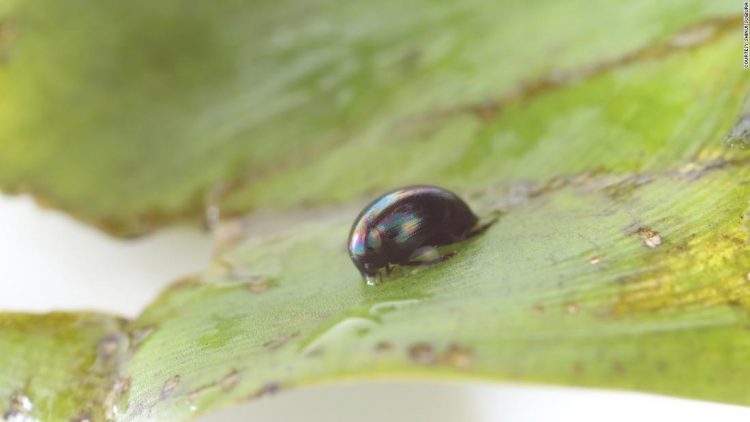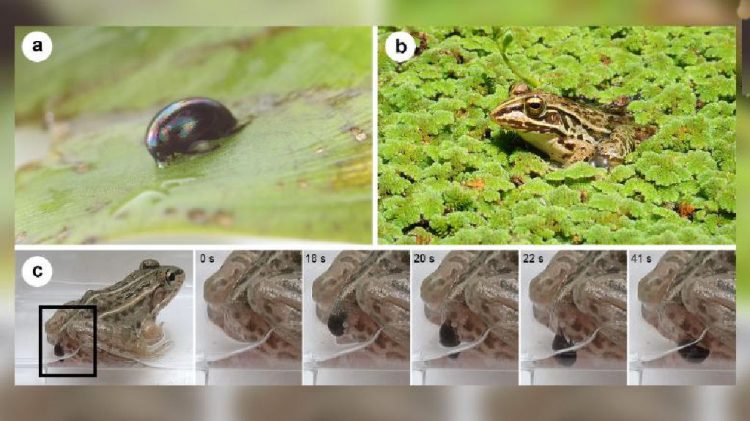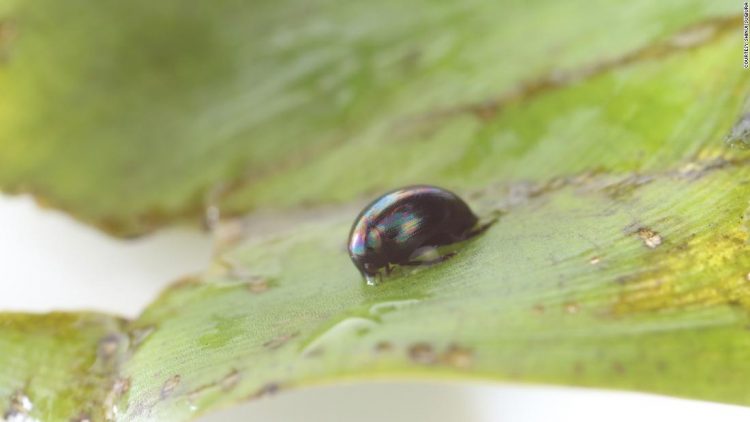Scientists recently discovered that a species of tiny water beetles can live through being eaten by a frog by somehow surviving a journey through its gut and simply exiting through the butt hole.
Until this week, Regimbartia attenuata was just another species of water beetle, but ever since a study on its astonishing survival skills came out on Monday, it’s been making headlines in mainstream media outlets around the world. And for good reason, as there aren’t many creatures on this Earth that can survive being swallowed alive, journey through their predator’s digestive system, simply crawl out the “back door” and go on with their lives as if they didn’t just pull off a Houdini-like magic trick.
Regimbartia attenuata were the subject of an unusual study carried out by Shinji Sugiura, an associate professor in the department of agrobioscience at Kobe University in Japan. He put the tiny beetles in the same laboratory bin with specimens from five different frog species, and the little bugs managed to crawl out the frogs’ “vents” in the vast majority of experiments.

Photo: Shinji Sugiura/Kobe University
During his study, Sugiura put beetles in the same plastic bins with the frogs, which ate 15 of the bugs, but excreted 93% of them alive within four hours. Some came out entangled in frog excrement, but they soon recovered and went on to live normal lives for weeks after the experiments.
Because frogs lack teeth, they rarely kill their prey before swallowing them, so they rely on their digestive system to kill and dissolve food into nutrients. Apparently, that doesn’t work on Regimbartia attenuata beetles. There is something special about them, though as Sugiura tried the same experiment on a different aquatic beetle(Enochrus japonicus), all of which were swallowed and excreted more than a day later.
“Here, I report active escape of the aquatic beetle R. attenuata from the vents of five frog species via the digestive tract,” Shinji Sugiura wrote in his study. “Although adult beetles were easily eaten by frogs, 90 percent of swallowed beetles were excreted within six hours after being eaten and, surprisingly, were still alive.”

Photo: Shinji Sugiura/Kobe University
No one knows exactly how the beetles find their way through the frog’s bowls, but Sugiura knows they need their legs to move in there. He actually fixed some of the bugs’ legs together with sticky wax, and without their means of locomotion, the bugs died and eventually excreted as feces. But the vast majority of those beetles that were free to move, emerged alive and well in a few hours. The fastest R. attenuata specimen exited the “gauntlet” in just after 7 minutes after being swallowed.
“Beetles tend to have tough exoskeletons relative to most insects, and many aquatic beetles in particular carry their own air to breathe from,” Matthew Pintar, an aquatic ecologist at Florida International University, told CNN. “Both of these characteristics may help prevent digestion if they are able to quickly move through the frog’s digestive tract, which R. attenuata is capable of.”
Another mysterious aspect of the beetle’s daring escape is how it manages to open the frog’s “back door”. The sphincter muscle pressure keeps the vent closed, and since R. attenuata specimens always exit head-first, Shinji Sugiura believes they must stimulate the hind gut somehow, urging the frog to defecate.
Even the Japanese scientist who conducted these unusual experiments declared his surprise after documenting the beetle’s escape.
“I did not predict that R. attenuata can escape from the frog vent,” Sugiura told WIRED Magazine. “I simply provided the beetle to the frogs, expecting that the frogs spat them out in response to the beetles’ behavior or something.”













